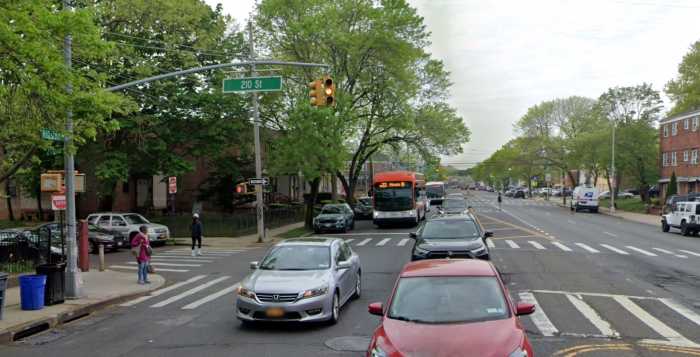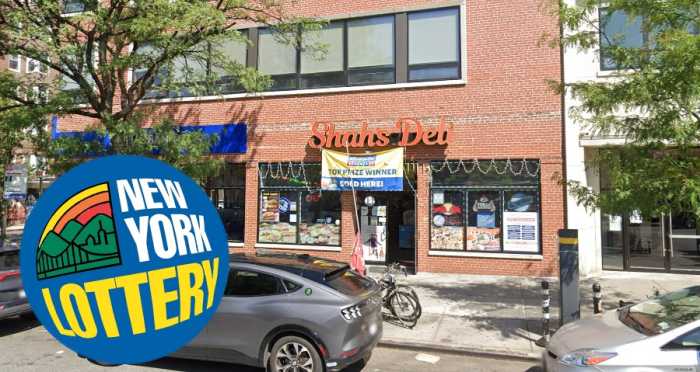By Daniel Massey
Richmond Hill historians Carl Ballenas and Nancy Cataldi call their enthusiasm for the neighborhood’s past an addiction.
Now that unbreakable habit has borne fruit in the form of a new book, called “Richmond Hill,” which was published earlier this month. The book is a series of more than 200 photographs with captions that illustrate the history of the community from its beginnings as farmland to current efforts to preserve and recognize its past.
“The book will appeal to anyone who has any tie to the Richmond Hill area,” said Cataldi in an interview Monday. “A lot of people are going to have a nostalgic pull to this book.”
The authors collected images from various sources, ranging from garage sales to descendants of the town’s founder, Albon Platt Man. The text is enhanced by accounts taken from the “Richmond Hill Record,” a newspaper that started in 1900.
“Richmond Hill” shows how a vibrant village took root in 1868 after Man, a New York lawyer, and his associate, Edward Richmond, were inspired by a new railroad line to purchase 250 acres of farmland in the western section of what was then Jamaica. The land was transformed into lots suitable for residences, a train depot was built and a community evolved.
By 1913, the Record described Richmond Hill as a suburban haven: “A real and lasting foundation had been laid on which to build a town of fine houses and public buildings … a community of real homes where the tired city worker can find the rest he needs and where his wife and children can live in peace and quiet.”
The origins of the book were not as thought out as the community and can be traced to accidental discoveries made by the local historians.
Ballenas, a fifth- and sixth-grade social studies teacher, found a petition to start a parish in Morris Park while examining stained glass windows damaged in a fire at the St. Benedict Joseph Labre church.
“I said ‘what’s Morris Park? This is Richmond Hill,’” he recalled in an interview Monday. Ballenas did some research, discovering there was a Morris Park and that it was absorbed into Richmond Hill along with another town called Clarenceville in 1895.
From there, he was hooked. “I went to postcard conventions and found pictures of the church,” he said. “The people who called these streets home are our forefathers and I wanted to bring them back to life.”
Cataldi, who has lived in Richmond Hill since 1963, became an ardent Richmond Hill historian in 1994, when she bought an old house and discovered the name of the original plasterer while taking the wallpaper down.
“I started looking at the house in a different way,” said Cataldi, who is a photographer and president of the Richmond Hill Historical Society. “I started looking at (architect) Henry Haugaard and found out he had built more than 1,000 houses in Richmond Hill.”
The historians’ discoveries led to further research and eventually to the book, which was scheduled for 4,000 copies in its first run.
“I’ve gotten goose bumps as we’ve gone along,” said Cataldi, as she described discovering the date of death of Richmond Hill Library founder Ella Flanders near stained glass windows in the Church of the Resurrection.
Divided into eight chapters, the book describes how the center of the village developed around the junction of Myrtle, Jamaica and Lefferts avenues, near the train station. It contains a chapter on the growth of businesses and civic organizations, which includes a detailed description of the history of Queens’ fabled eatery, the Triangle Hotel and Haufbrau.
“Among the patrons who frequented the hotel were New York Yankee home run king Babe Ruth, whose favorite meal was fried eel and ice cream,” reads a caption. “It is reputed that (actress) Mae West was routinely booted from the establishment for smoking and creating a ruckus.”
The authors devote another chapter to churches and schools, which they said formed the backbone of the community. Another section, “the celebrated of Richmond Hill,” focuses on photo journalist and urban reformer Jacob Riis, who lived at 84-29 120th St. beginning in the late 1800s.
The chapter includes a newly rediscovered address praising Riis delivered by President Theodore Roosevelt in 1903 at the Richmond Hill train depot; a photograph of the Marx brothers’ house at 89th Avenue and 134th Street; and a colorful description of Ernest Ball, who lived on 84th Avenue and composed “When Irish Eyes are Smiling” at the Triangle Haufbrau.
Ballenas and Cataldi see the collection of photos, which is part of Arcadia Publishing’s “Images of America” series, as part of a larger effort to preserve Richmond Hill’s history. Plans are in the works to open up a Richmond Hill archive, which will be housed in donated space atop Simonson’s Funeral Home.
The historical society has launched a drive to downzone the neighborhood to protect its architectural character and is raising funds to recreate a 1910 Flag Day ceremony organized by Jacob Riis at the Richmond Hill Library.
All profits from the book, which is available at Barnes & Noble for $19.95 or through the authors directly, will go to those efforts to preserve Richmond Hill’s history. For more information or to order a book, call 847-6070 or visit www.richmondhillhistory.org.
Reach reporter Daniel Massey by e-mail at Timesledger@aol.com or call 229-0300, Ext. 156.


































